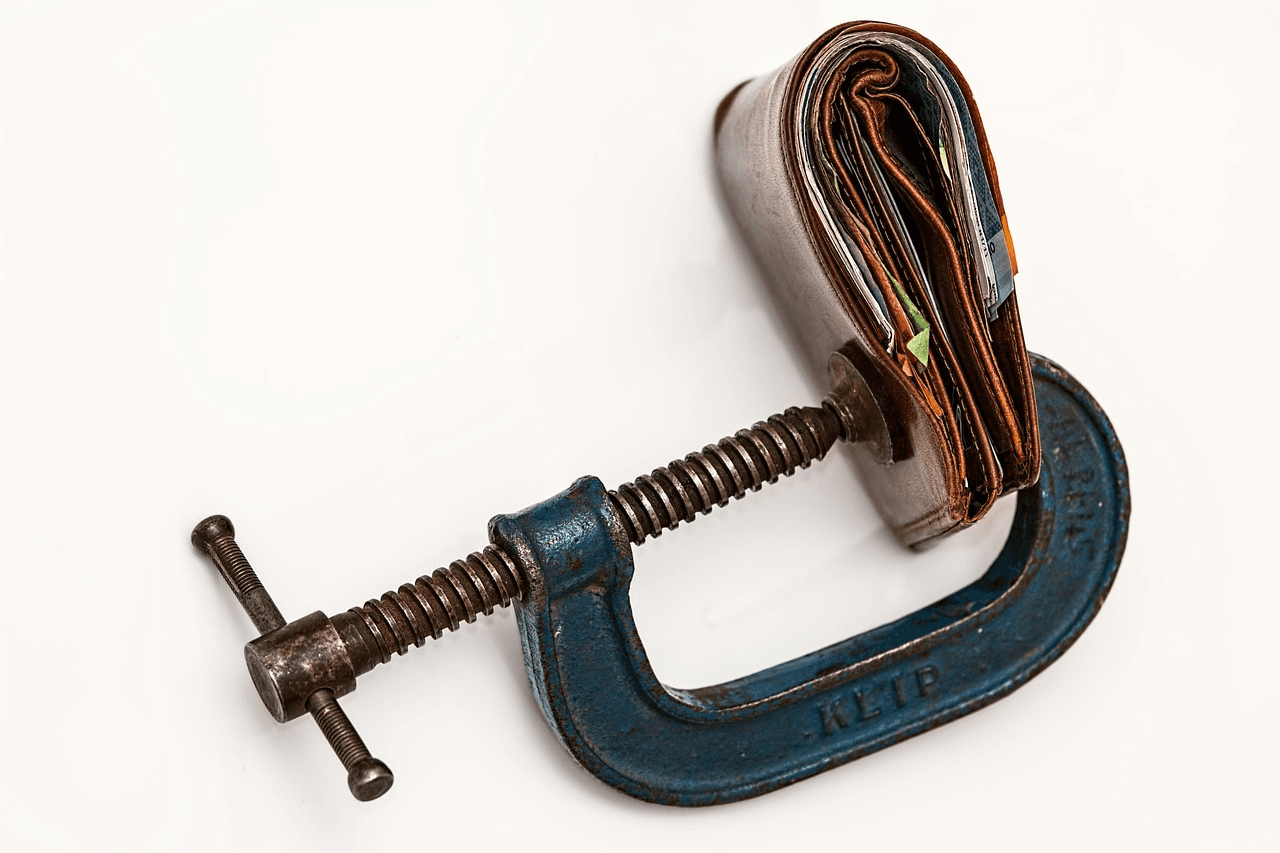
Free up Cash with Inventory Reduction

Yulia Fedorova
03 Nov 2022
Supply Chains have prioritized two metrics over the last decade where interest rates and inflation were low:
- Customer Fill Rates and
- Marginal Supply Chain Costs.
Now, where cash is not free anymore, inventory holding costs and, therefore, free cashflows gain importance.
Many companies like Nike (+44%), Walmart (+32%), Target (43%), and many others, especially in retail and e-commerce, are currently over-bloated with inventories. Inventories that need to be sold off impact the profit bottom line.

Nike, for example, revealed that inventory was up by 44 percent on a year-over-year to $9.7 billion as of the end of Q1 2022, "driven by elevated in-transit inventories from ongoing supply chain volatility, partially offset by strong consumer demand during the quarter." [1]
Recent supply chain disruptions on both sides, demand and supply resulted in high inventory levels across many industries. During a phase where demand was high and supply hard to get, companies bought as many raw materials and goods as possible to fulfill customer demands and avoid stockouts.
These effects can be seen in recent spikes of demand as well as supply variability and longer replenishment lead times:
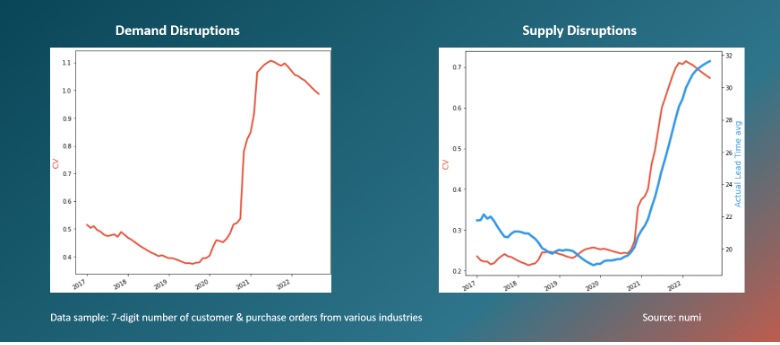
Companies quickly strive into problems like the fear of a recession and lots of open purchase orders in the pipeline when consumer demand slows down. The inventory is built up, encountering some operational and financial problems:
- Bound capital resulting in cashflow conflicts or new investment barriers
- Higher logistics expenses
- Blocked warehouse capacity
Therefore, companies should look deeper into inventory reduction strategies as one of the key supply chain drivers to increasing current operational profits.
Five strategies for inventory reduction
1. Inventory Segmentation
One suitable strategy to reduce inventory is to reevaluate service level targets. There are several approaches to defining target-service levels:
- One size fits all: Same service level target across all products
- ABX/XYZ Segmentation: AX segments get a higher service level than XZ segments to maximize service levels for high-volume products and reduce inventory levels for very volatile slow-moving parts
- Segmentation based on costs: Reduced target service levels for high-cost products like high inventory holding cost, handling, or storage cost.
- Segmentation based on profits: High-margin products with a high negative impact of out-of-stock situations get higher service levels than low-margin commodity products
Where the first two approaches are relatively easy to implement, the last two are trickier, especially when identifying a product's true inventory costs or profits. Your company targets should align with your inventory segmentation targets. When cash flow is a critical topic, a segmentation based on costs, especially inventory holding cost, could make sense.
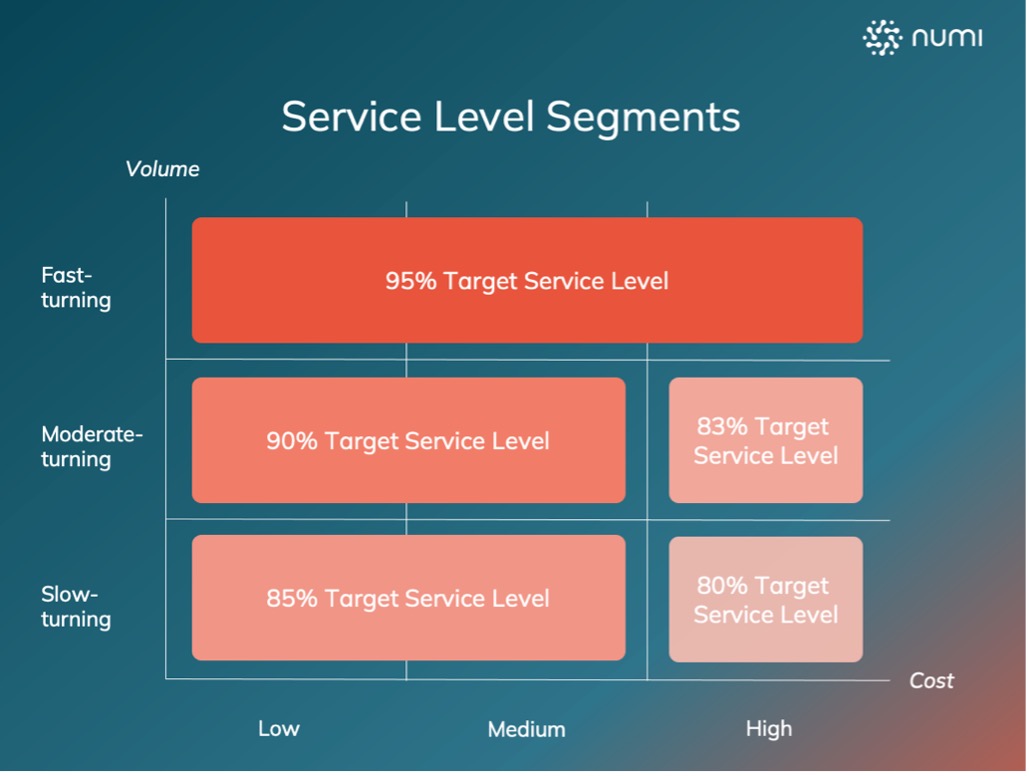
2. Reduce Uncertainties through forecasting
Safety stock is a significant portion of your overall inventory and, therefore, a driver to reduce overall inventory levels and bound capital. Safety stock can be defined as:

It includes parameters for the standard deviation of demand and the lead time. Both parameters can be reduced by incorporating forecast errors instead of a standard deviation of historical demand, and the same for lead time predictions and their errors. A summary of concepts on how to improve forecasts for demand and supply, i.e., lead times, can be found here - https://numi.digital/blog/a-resilient-demand-planning-framework.
The impact of a variability reduction can be seen in the following chart. Fluctuations in demand or lead times increase the amount of safety stock. Lead time variability usually affects the safety stock level more than fluctuation in demand, based on a specific customer simulation we conducted.
Picture - Fluctuations
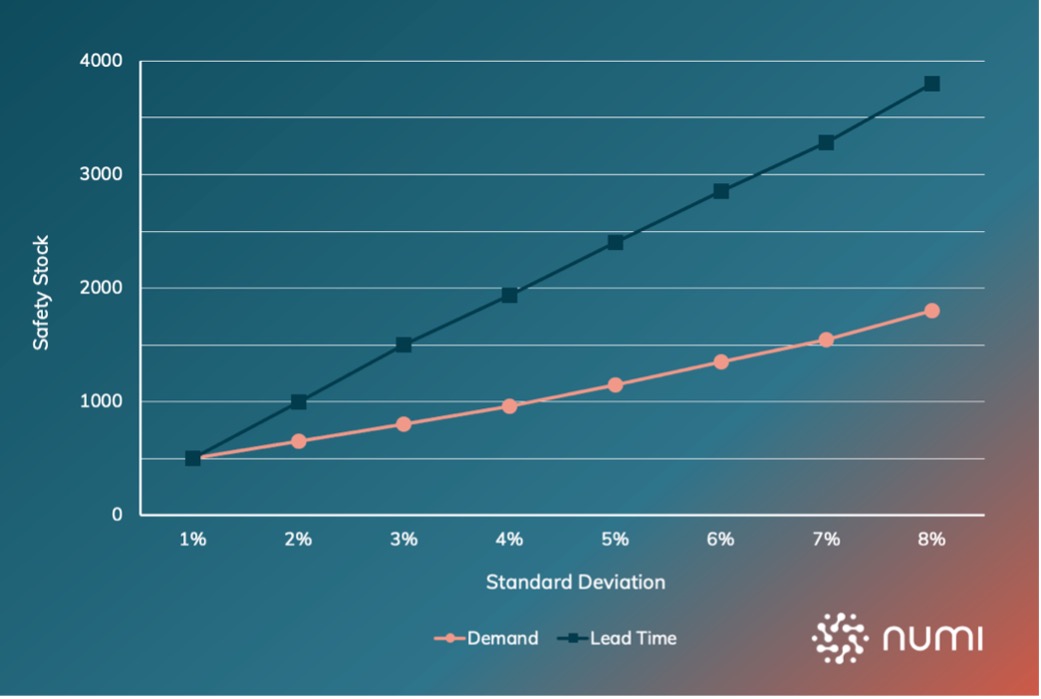
3. Reduce order quantities and shorten order frequency
Economic and discounted order quantities help purchase cost-optimized volumes during phases where demand and supply are relatively stable. In current situations, where lead times are long and demand volatility is trending, reevaluating these concepts might be useful.
Ordering fewer volumes more frequently can be a considerable driver for inventory reductions. It also gives you much more flexibility to react to demand changes.
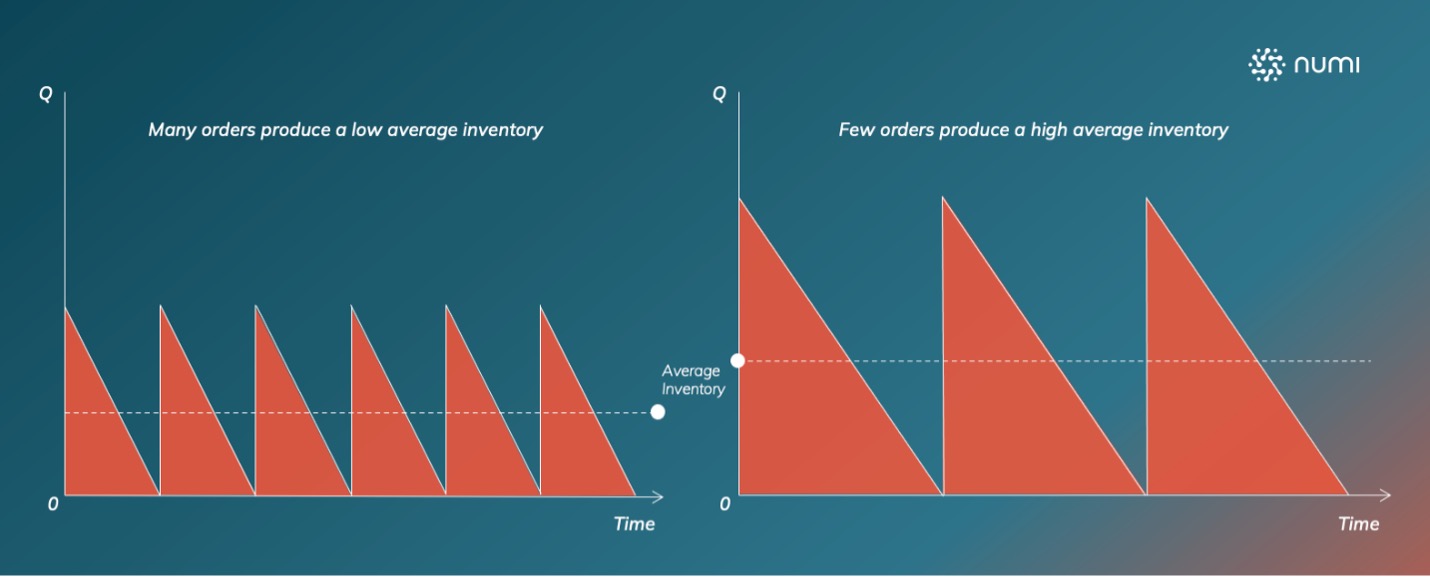
Of course, there might be long-term contracts with minimum order quantities with your suppliers; therefore, a critical evaluation of costs, minimum production order volumes, and discounts per supplier and product are necessary. Consider different scenarios and discuss them with suppliers. Compare the size of minimum batches, optimal batches, and unit costs in each case with your risks and the cost of managing additional inventory. The calculations will likely lead to the conclusion that a decrease in the batch size and an increase in the frequency of shipments will contribute to a reduction in inventory and costs associated with the storage of products.
4. Use network inventory
Another aspect of inventory reduction is to leverage inventories in your network. In a setup where local warehouses can be replenished from a few centralized hubs or other local warehouses, automated and cost-optimized sourcing recommendations help avoid long lead times or unnecessary inventory built up at each supply chain node. This Multi-Echelon-Inventory-Optimization approach helps to reduce overall network stocks by setting the right inventory parameter at each warehouse. Also, identifying non-mover on the local warehouse level and shifting them to markets with demand can be a huge lever for inventory reduction.
5. Sell off obsolete stocks
There are often situations where inventory has been built up and needs to be sold off somehow. First, you need to identify suitable products for these types of actions. This is usually a joint exercise between data analysis and human expert judgment. High inventory days outstanding with negative demand trends should be augmented by human product or category expertise.
Some sell-off strategies are listed below:
- Sales Promotions. Discounts are always a good way, especially in e-commerce, to reduce vast amounts of slow-moving inventories.
- Inventory Kitting. Inventory kitting is often referred to as product bundling or cross-selling. "Buy one and get one free" or packaging non-moving stock with other selling items. In some cases, it could make sense to bundle the dead stock alongside products demanded as an add-on.
- Inventory on Consignment. A retailer or wholesaler may do a better job if you cannot sell your inventory. It might be possible to arrange a consignment inventory agreement with another business or liquidation retailer to sell your products.
- Charity. Charities will be more than happy to take the product off your hands, and it'll be a good deed done. Also, depending on your tax jurisdictions, you might even be entitled to a tax write-off.
These are strategies for reducing inventory levels during a phase where demand is decreasing or stagnating. Some of these strategies also come with a higher risk of stockouts. These two conflicting targets must be balanced based on your current business goals.
numi provides a simulation environment where different strategies can be tested and measured against inventory and service level KPIs. If you want to learn more about our supply chain check-up, simply request a demo.
[1] https://www.thefashionlaw.com/nike-q1-revenue-up-profit-margin-down-due-to-rising-costs-inventory-issues/